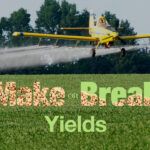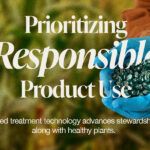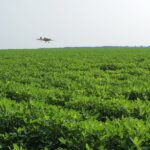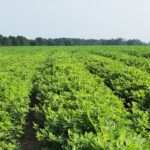Identify and Treat Tar Spot Using These Tips
Growers can get a jump on tar spot with these scouting and treatment tips.

Midwest corn growers are coming off their worst season for tar spot since 2018, when many saw it for the first time. By 2021, they had some experience with the disease but were hit hard and suffered severe yield losses, according to Purdue University’s Darcy Telenko, Ph.D.
Last year we saw a big response (in plant health) to two applications of Miravis Neo, and it gives us one of the widest windows of protection for the plant.
“I think when we get final data in, we’ll probably see more yield loss in 2021 than the other three years combined,” says Telenko, field crop extension pathologist.
Still reeling from their 2021 encounter with tar spot, growers got more bad news: Scientists found viable spores in the season’s field debris. This means the disease will likely be back next season.
“We know it survived in the debris, so it is overwintering,” Telenko says. “From now on, it’s going to be about how much inoculum is in your field, plus the weather conditions.”
Nick Groth, Syngenta agronomy service representative in Wisconsin, says tar spot’s Phyllachora maydis spores have definitely been on the move in his state. The disease expanded its host range over the past few years, and it is currently affecting cornfields throughout Wisconsin.
Don’t Stop Scouting
Tar spot hit with full force in 2021 in the second week of August for many growers, and those who weren’t ready for it realized significant yield loss. That’s why Groth encourages farmers to scout until silage harvest.
“By mid- to late-August, growers may think they’re done scouting, that they don’t need to worry anymore because the yield is made, since by then it could be a month passed tassel,” he says.
But according to Groth, research from Purdue shows that even at full-dent stage, tar spot can result in up to a 20% yield loss*.
“A lot of yield is formed at the end of the year when you’re packing starch there, so you definitely want to stay on your scouting,” Groth says. “We like to say until silage harvest time — that’s about half milk line — and by then, yield loss will be a lot less.”
Andrew Tucker, precision agronomist at Nutrien Ag Solutions in Mineral Point, Wisconsin, helps his customers with scouting by participating in Cropwise™ Imagery — the Syngenta satellite imagery product that helps growers monitor field health by comparing satellite photos taken every three to five days.
“Cropwise Imagery has detected issues in the field that we could scout and figure out exactly what was going on way before harvest,” Tucker says, adding that he recently used it to monitor a trial of hybrids with tar spot. “You could see the differences clear as day.”
Know Your Pest
Josh Pickel, crop specialist at Insight Farm Services in Marshall, Wisconsin, says treatment for tar spot should be one part of a field management plan, not its sole focus. In his area, tar spot had a big impact in corn-on-corn fields where rootworm beetles had already damaged the crop.
“I think we put a lot of blame on tar spot, where if we controlled the root worm feeding early, we probably wouldn’t have had such severe tar spot,” Pickel says.
In hard-hit areas where corn was going from grass-green to brown in 10 days, Pickel conferred with Groth to find a solution.
“We needed to get a three-mode-of-action fungicide on to reduce the tar spot and protect the plants,” Pickel says.
Miravis® Neo fungicide fit that need. With the active ingredients azoxystrobin, propiconazole, and Adepidyn® technology, Miravis Neo provides broad-spectrum disease control and plant-health benefits for increased yield opportunity and harvestability in corn and soybeans.
“It’s been proven in the market and has a long-lasting residual activity,” Pickel says. “We’ve seen really good results with it.”
Tucker has, too.
“Last year we saw a big response [in plant health] to two applications of Miravis Neo, and it gives us one of the widest windows of protection for the plant,” Tucker says.
The agronomists agree that a management plan should consider field history and all potential threats. And tar spot isn’t the only obstacle to maximizing yields in corn, says Tyler Harp, technical development lead for Syngenta.
“Miravis Neo does much more than provide good tar spot control such as providing broad-spectrum disease control on difficult diseases like Fusarium ear rot and gray leaf spot, and it provides significant plant health benefits,” Harp says. “This is one reason why Miravis Neo helps provide consistently higher yields across the Corn Belt — tar spot or no tar spot — compared with other products in the market. Being good on tar spot is very important, but it needs to do more than that to consistently maximize yield potential. That’s the power and benefit of Adepidyn technology and Miravis Neo.”
Choosing a hybrid for its tar spot resistance may seem like a no-brainer, but Tucker says growers should make sure they’re considering what’s best for their ground so they don’t sacrifice yield before they plant.
“We can treat for tar spot,” he says. “You can’t treat for a hybrid that’s not the right fit for a field. It isn’t going to yield for you if you don’t have the right genetics out there.”
*Adapted from Carter and Hesterman. 1990. Handling Corn Damaged by Autumn Frost. NCH-57. Purdue Univ. Cooperative Extension Service, W. Lafayette, IN 47907.
- Growers should scout for tar spot until silage harvest.
- Satellite imagery technology can help growers monitor the health of their fields.
- Tar spot treatment should be one part of a larger field management plan.























